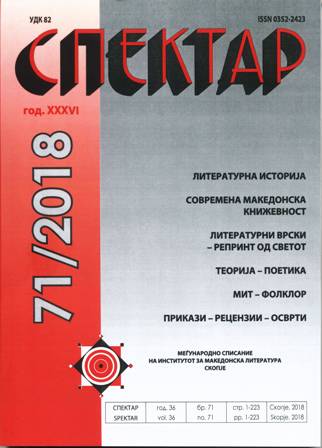ПОЗИТИВНАТА ЕСТЕТИКА
POSITIVE AESTHETICS
Author(s): Afrim RedžepiSubject(s): Language and Literature Studies, Literary Texts
Published by: Институт за македонска литература
Keywords: aesthetics; positive aesthetics; nature; monadology; ecology; tragedy
Summary/Abstract: The paper has set both influential aesthetic procedures and settings for positive aesthetics. One posture for positive aesthetics comes from Leibniz and Carlson, the other from Emily Brady. It essentially differentiates both settings and procedures in/for positive aesthetics, namely the existence of ugly and grotesque forms (organisms) in nature. While the first setting transforms the deformity, grotesque, or tragic of various forms (organisms) into nature through the category of transience - nature remains a predisposed harmony, the ugly is seen as transient within the perfect harmony, the other does not deny the presence of the deformed and grotesque forms (organisms) in nature. Brady's attitude to positive aesthetics is interesting, since the trage-dy and tragic nature present in nature determine them as aesthetically func-tional. According to her, we cannot positively taste natural beauty, if its con-trast (ugly) does not exist. Hence, in aesthetics, the contrast effectuates deep aesthetic values. Through the game or the mobility of the contrast elements (beautiful and ugly), nature is beautiful and interesting, not only in terms of aesthetics but also in terms of cognition. In fact, it is also the essential task of positive aesthetics, to show the beauty of nature, to taste its perfect harmony, and thereby to encourage the ecological awareness of nature.
Journal: Спектар
- Issue Year: 2018
- Issue No: 71
- Page Range: 167-175
- Page Count: 9
- Language: Macedonian

